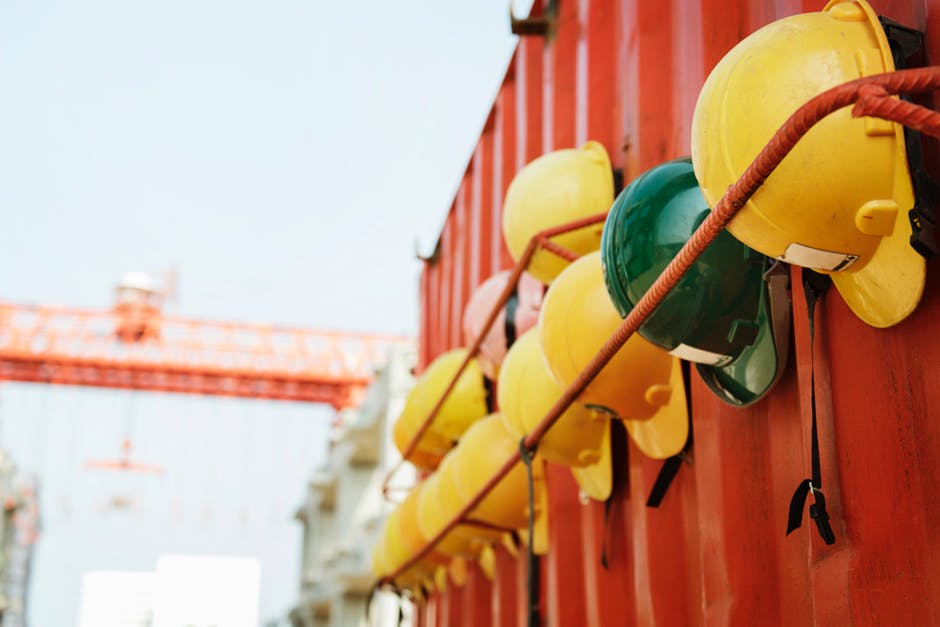Health and safety in the workplace should always be a topic that is high on your agenda if you are working in any sort of industrial environment, and if you can achieve a good safety record it should also contribute to greater productivity too.
Here is an overview of what sort of typical safety hazards you need to guard against and what steps to take to avoid an accident, plus a look at some of the main basic safety measures you should adopt in order to keep the production line rolling and workers as safe as possible.
Understanding the hazards:
A good starting point would be to make a checklist of the main hazards you are likely to have to deal with in your workplace, as a working knowledge of these dangers will help you to take counteractive measures.
You can categorize industrial hazards under a number of broad headings.
Physical threats to the safety of workers are a key issue and there are numerous challenges to account for in your safety procedures, such as slip and trip hazards, inadequate lighting, the risk of exposure to noise and poor air quality, plus the danger of fire, amongst others.
You can take steps to manage these specific threats, such as maintaining good air quality throughout the building, for example, which you can read about on this page.
Other key hazard categories include biological and chemical threats, injuries sustained through poor ergonomics and building design, and even the mental health aspect of working in a challenging or hazardous situation on a regular basis.
A good suggestion would be to conduct a thorough health and safety review where you take a detailed look at the layout of your building and what specific dangers workers face every time they clock on.
Make a comprehensive checklist of all the potential hazards that are relevant to your particular industry and then look to create a health and safety plan that deals with those issues in the best way possible.
Dealing with fire risk:
The risk of fire is a constant potential threat to every building and that risk is enhanced when you have machinery, chemicals, and other potentially hazardous sources all under the one roof.
There are many different ways for a fire to start and electrical faults, chemical spillages, and a lack of safety awareness amongst workers, can all create a fire risk in an instant.
You can’t always avoid a fire starting when an accident occurs through an unforeseen set of circumstances, but you can at least have a robust set of fire safety procedures in place to help deal with the situation and limit the potential damage.
A good quality fire alarm warning system needs to be installed and regularly tested and maintained, and a sprinkler system might also be necessary, once you have carried out a fire risk assessment.
Fire extinguishers installed at regular intervals around the building will allow immediate action to be taken to try and reduce the spread of fire and hi-spec smoke detectors provide a decent early warning of a fire or smoke hazard.
Emergency lighting:
All workers need to be fully briefed on what to do in the event of an emergency and how to evacuate the building in the quickest and safest way possible.
One of the threats to a successful and safe evacuation of the building is when power in the building is lost and it becomes dangerous to walk around in the dark.
Power cuts are always a possibility in an industrial setting for a number of plausible reasons and a lack of adequate lighting greatly heightens the prospect of an accident happening.
The way to counteract this threat is to install emergency lighting that lights up the building to make it safer to see where you are going and minimize the risk of an accident.
Falls are a leading cause of accidents and deaths:
One of the main causes of death and injury in the workplace falls, and it should be noted that a worker doesn’t have to fall from a great height to suffer a bad or fatal injury.
Nearly half of all fatal falls in an industrial setting occurred when the person fell from a height of fewer than 20 feet. More than 10% of recorded fatal falls were from a height below six feet.
Some industries have a higher incidence of falls than others, and it should not be a surprise to learn that the construction sector is considered one of the most hazardous workplace environments for falls.
It is reasonable to surmise that a very high percentage of these recorded fatalities and injuries could have been prevented with adequate risk assessment procedures in place and with the right use of safety equipment and adequate training.
Large numbers of workers are treated for fall-related injuries each year but with the right precautionary measures and by raising awareness of the potential dangers, many of these accidents could have been avoided.
Know your limits:
Pushing your body to its limit and beyond is another leading cause of accidents in the workplace and overexertion is cited as the cause of about a third of all work-related accidents according to the National Safety Council.
Every worker should be encouraged to assess and know their limitations before undertaking a task that might lead to an injury through overexertion.
Ergonomic injuries are when you do something like tear a tendon, damage your spine, or overreach when attempting to lift an object that is too heavy, or is not being lifted and handled correctly.
Every worker needs to have health and safety training that highlights and talks about the dangers of ergonomic injuries and provides guidance on how to work safely and know your physical limitations.
It is not just physical jobs that create injuries and office workers can also suffer injuries if they don’t set up their work environment in an ergonomically efficient way and don’t take regular breaks away from their desk.
These are some of the main causes of accidents but with some basic safety training and an ongoing risk assessment program, it is possible to significantly reduce the prospect of an accident happening in your workplace.
Read Also:






















